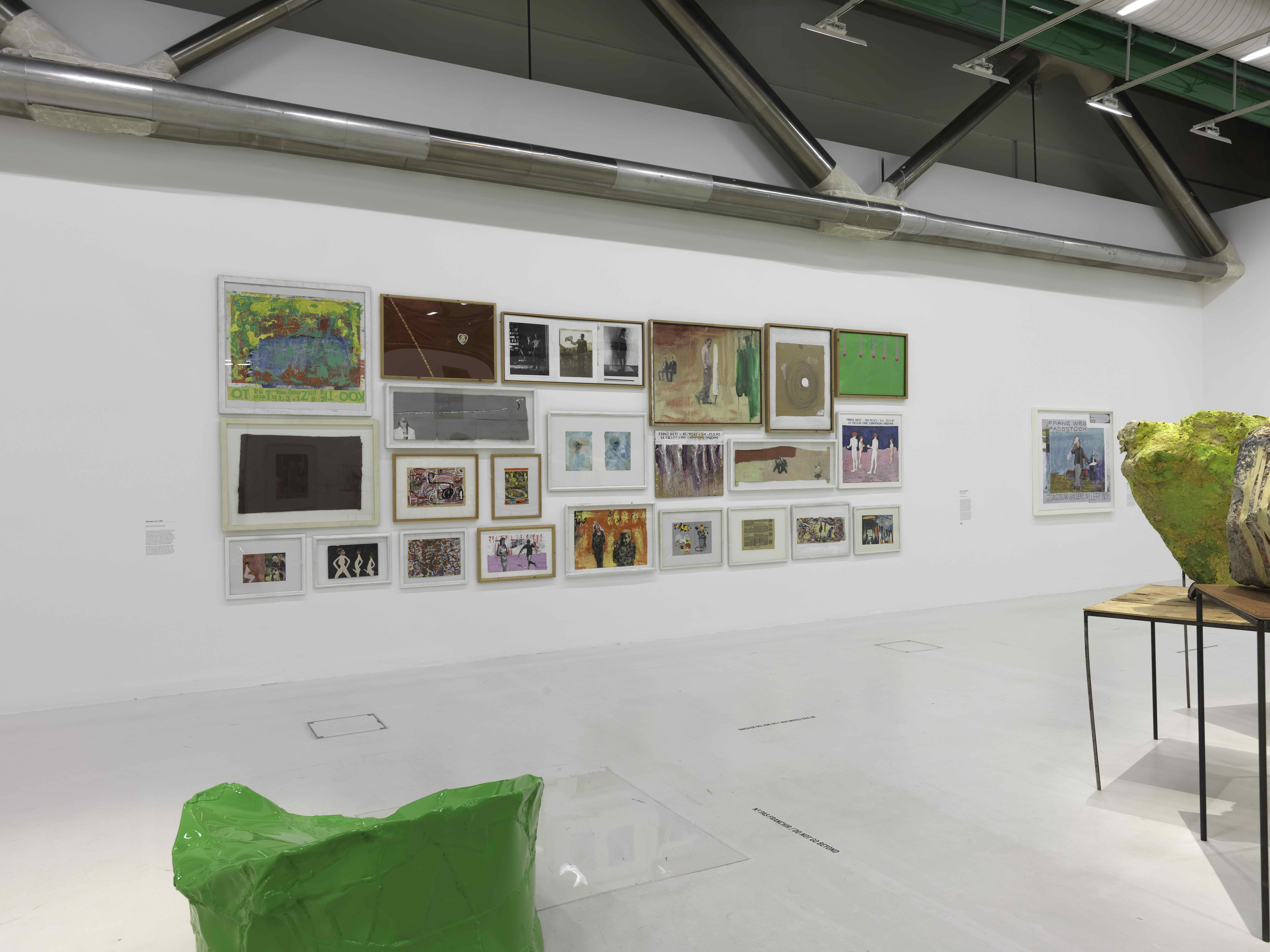Loan Program
Franz West Traveling Retrospective
Centre Pompidou November 29th, 2018
The Brant Foundation Loan Program
Centre Georges Pompidou – Sept. 12, 2018 – Dec. 10 2018
Tate Modern – Feb. 20, 2019 – June 2, 2019
Franz West, L’Art pour l’Art (Art for Art’s Sake), 1973-1997, Mixed media (including paint, collage, magazine advertisements, cardboard stickers, newspaper, fabric, posters, wood, metal, and glass) in 23 parts, dimensions variable
The Centre Georges Pompidou in Paris presents a comprehensive retrospective of the work of Franz West, who died in 2012. Curated by Christine Macel, chief curator at the Pompidou, and Mark Godfrey, senior curator at Tate Modern, London, where it will travel in February 2019, the exhibition spans West’s influential career and draws on major loans from institutions including The Museum of Modern Art in New York, Museum Ludwig in Cologne, and MUMOK, Museum moderner Kunst Stiftung Ludwig, in the artist’s hometown of Vienna.
The nearly two hundred works on view demonstrate the full breadth of West’s oeuvre, beginning with rarely seen drawings from the early 1970s and his first Passstücke (Adaptives)— the sculptures for which he became well known—to his papier-mâché works from the 1980s and Lemurenköpfe (Lemur Heads), made in the 1990s, as well his collages, furniture works, and collaborations with other artists. Several monumental open-air sculptures from the latter part of West’s career will be on view in the Pompidou’s lobby and in front of several other museums and institutions in the Marais district.
Showcasing the striking physical presence and formal qualities of his work, the retrospective also aims to explore the philosophical dimensions of the artist’s practice and its unique social sensibility. West grew up in Vienna in the aftermath of World War II—a period he described as “a very conflicted time”—and saw avant-garde performances by the Viennese Actionists during the 1960s. The aesthetic he developed in his own work engaged high and low cultural references in equal measure and encouraged direct interaction with art as a way to explore the positioning of the body and the status of art in daily life. With works that playfully manipulate everyday materials and imagery in novel ways, he created objects and installations that redefine art as a social experience, calling attention to the way it is presented and how viewers interact with works of art and, in turn, with each other.
(Courtesy of David Zwirner Gallery)
